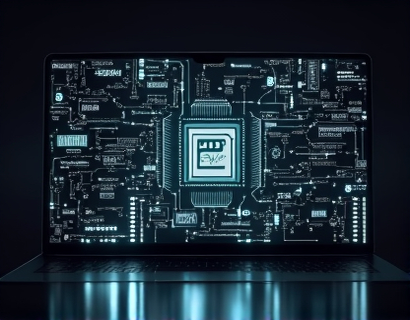Unlocking DeFi Potential: Master the Next-Gen Web3 Wallet for Seamless Crypto and Token Management
The landscape of finance is undergoing a transformative shift with the advent of decentralized finance or DeFi. This revolutionary approach to financial services leverages blockchain technology to offer transparent, secure, and accessible alternatives to traditional financial systems. At the heart of this revolution is the Web3 wallet, an advanced digital tool designed to manage cryptocurrencies and tokens with unprecedented ease and security. This article delves into the intricacies of Web3 wallets, exploring how they unlock the full potential of DeFi and simplify the complex world of digital asset management.
Web3 wallets are more than just digital storage solutions; they are gateways to a decentralized financial ecosystem. These wallets are built on blockchain technology, ensuring that users maintain full control over their assets without relying on intermediaries. The primary advantage of Web3 wallets is their ability to interact directly with smart contracts, the self-executing contracts with the terms directly written into code. This direct interaction enables seamless and secure transactions, reducing the risk of fraud and enhancing the overall user experience.
The architecture of a Web3 wallet is designed with security and user-friendliness in mind. At its core, a Web3 wallet consists of a private key, which is a unique string of characters that proves ownership of the digital assets stored within the wallet. This private key is never shared or stored on centralized servers, making it highly resistant to hacking and unauthorized access. Instead, the wallet generates a public address, which is used to receive assets. This dual-key system ensures that only the wallet owner can initiate transactions, maintaining the highest level of security.
One of the most significant advantages of Web3 wallets is their compatibility with a wide range of blockchain networks. Unlike traditional wallets that are often tied to specific cryptocurrencies, Web3 wallets support multiple blockchains, including Ethereum, Binance Smart Chain, Solana, and many others. This versatility allows users to manage a diverse portfolio of assets under one interface, streamlining the process of switching between different cryptocurrencies and tokens. The ability to handle multiple blockchains also opens up new opportunities for cross-chain transactions and interoperability, further enhancing the utility of Web3 wallets.
User interface and experience are critical factors in the success of any financial tool, and Web3 wallets are no exception. A well-designed Web3 wallet offers an intuitive and user-friendly interface that simplifies complex operations. The interface typically includes a dashboard that displays the balance and available assets, along with easy-to-use buttons for sending, receiving, and managing tokens. Advanced features such as transaction history, portfolio analytics, and real-time market data are often integrated to provide users with comprehensive insights into their financial activities.
Security remains a paramount concern in the realm of Web3 wallets. To address this, developers employ various security measures, including multi-signature transactions, biometric authentication, and hardware security modules. Multi-signature transactions require multiple private key inputs to authorize a transaction, adding an extra layer of security. Biometric authentication, such as fingerprint or facial recognition, provides a convenient and secure way to access the wallet. Hardware security modules store private keys offline, protecting them from online threats.
Another key feature of Web3 wallets is their integration with decentralized applications (dApps). dApps are applications that run on blockchain networks and offer a wide range of services, from decentralized exchanges (DEXs) to lending platforms and yield farming opportunities. Web3 wallets serve as the primary interface for interacting with these dApps, allowing users to seamlessly participate in the DeFi ecosystem. For instance, a user can deploy a lending contract, monitor its status, and manage collateral all within the wallet interface, eliminating the need to switch between multiple platforms.
The convenience of Web3 wallets extends to the management of NFTs (Non-Fungible Tokens) and other digital assets. NFTs, which represent unique digital items such as art, collectibles, and in-game items, require a secure and efficient way to be stored and traded. Web3 wallets provide a dedicated space for NFTs, ensuring they are safely stored and easily accessible. Users can view detailed information about their NFTs, including ownership history and market value, directly from the wallet. This integration simplifies the process of managing a diverse collection of digital assets.
Interoperability is another area where Web3 wallets excel. As the DeFi ecosystem continues to grow, the need for cross-chain functionality becomes increasingly important. Web3 wallets that support multiple blockchains enable users to transfer assets between different networks without the hassle of using multiple wallets. This interoperability is achieved through the use of cross-chain protocols and bridges, which facilitate the secure and efficient movement of assets across different blockchain environments. Users can thus take full advantage of the unique features and opportunities offered by various blockchain platforms.
For crypto enthusiasts and DeFi users, the adoption of a Web3 wallet is a crucial step towards maximizing the potential of decentralized finance. The ease of use and comprehensive feature set of these wallets make them an indispensable tool for navigating the complex world of digital assets. Whether you are a seasoned trader or a beginner exploring the DeFi space, a Web3 wallet can significantly enhance your experience by providing a secure, user-friendly, and versatile platform for managing your crypto and token holdings.
In conclusion, the future of finance is decentralized, and Web3 wallets are at the forefront of this revolution. By offering a secure, intuitive, and interconnected solution for managing digital assets, Web3 wallets empower users to fully participate in the DeFi ecosystem. As the technology continues to evolve, we can expect even more advanced features and broader adoption, further solidifying the role of Web3 wallets in the financial landscape of the future.










































